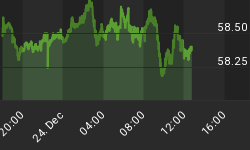Unemployment is the one statistic that one would have thought is easy to define: just total up the number of people on unemployment benefit and there's your answer. It is however much more complex, particularly in a large country like the United States, whose potential labour force is estimated to be 250,080,000 across all 50 states plus Washington DC. Of this total 101,479,000 are not currently employed, a ratio of over 40%, and of these only 8,575,000 are deemed to be actually unemployed. The relevant figures are here.
The reason this matters is unemployment is one of the three key variables macroeconomists use to formulate policy, the other two being GDP and the rate of price inflation. Indeed, the Fed's Open Market Committee has set the unemployment rate as one of its two policy targets. This becomes questionable at best when the officially unemployed are less than 10% of those who could be in work but are not.
Looking at the distribution of benefits doesn't help either. With benefits distributed on a rules-based system, many unemployed do not get benefits. For example, in the US there are 2,472,547 "insured unemployed" at the state level, compared with 8,575,000 officially unemployed, so less than one in three are actually on benefits and less than one in forty of those in the not-in-labour-force category, making this figure useless for policy guidance as well.
Insured unemployed are announced weekly with the Initial Claims announcement by the Department of Labor, while the number officially unemployed is announced separately by the Bureau of Labor Statistics (BLS) monthly on the first Friday of the month following. The BLS works on very tentative estimates while the insured unemployed figure, which is the hard number, forms only a small part of the overall picture.
Estimates for population growth add to the confusion. According to the BLS, the total number of people not in the labour force has actually increased over the last year to March by 279,000, though the number classified as unemployed has fallen by 1,804,000. Even these figures will be revised long after they are relevant in the light of the next population census; but on the face of it the increase in jobs is not keeping up with the estimated increase in the working population.
Job creation is an on-going process, admittedly hampered by the reluctance of banks to lend to smaller businesses, which form the bulk of any economy's activity. Despite what the GDP numbers say about growth or its absence, economic progress continues with people buying better mobile communications, new autos and flat-screen TVs. The tragedy of unemployment is that these benefits are unaffordable to most of the unemployed. It's not that they are work-shy: much of the problem is that in a zombie-like economy, scarce capital resources are not being redeployed productively while debt is mounting, so job creation becomes unnecessarily slow.
One would have thought disappointing unemployment numbers would add to the evidence that the US economy is weakening, already foreshadowed by falling commodity prices and the dramatic slide in shipping rates. We had such an event over Easter when the BLS announced non-farm payrolls was 120,000 less than expected, and the previous two months' figures were also revised downwards by a further 69,000.
Is this confirmation of an economy about to slide? Maybe, but unemployment statistics are too unreliable as an indicator and should never have been adopted as a policy tool.
















